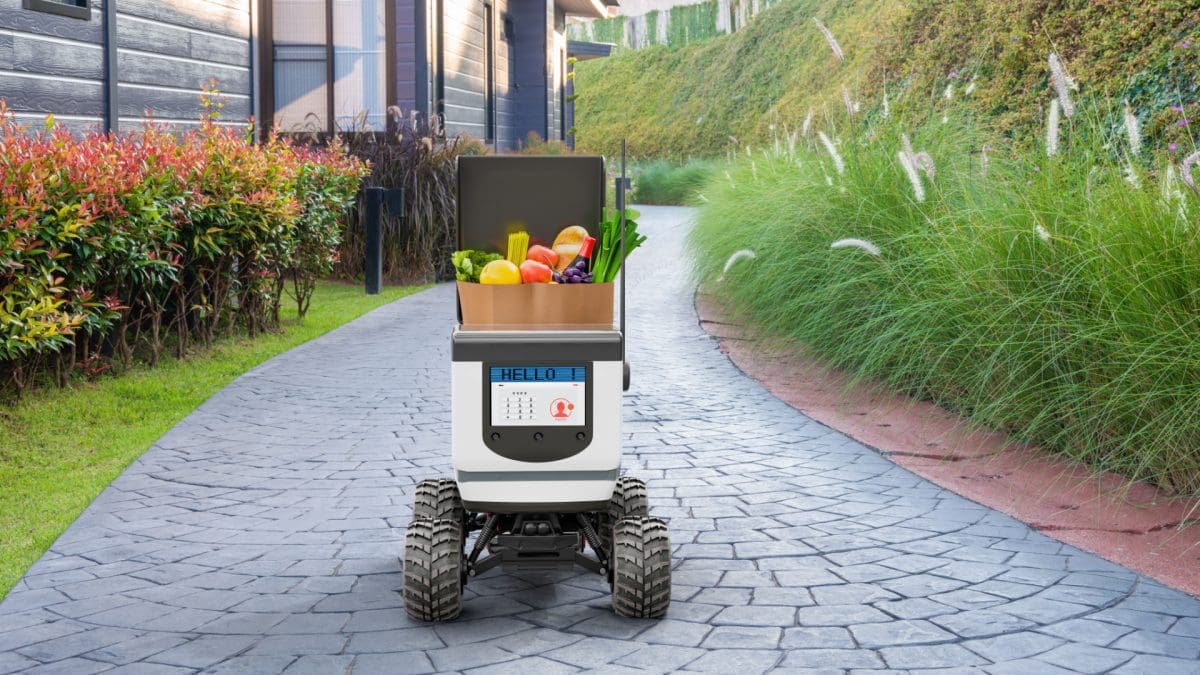
The world has seen a rapid growth of technological developments in recent years. While self-driving vehicles seemed too futuristic only a decade ago, we are now seeing major players in the food industry using self-driving technology for their driverless delivery services. Americans have grown accustomed to using food delivery apps such as GrubHub and ASAP to provide fast and accessible delivery at their doorsteps, but these third party delivery services require delivery drivers. Companies are experiencing driver shortages during the unprecedented Great Resignation. According to the U.S. Chamber of Commerce, “In 2021, more than 47 million workers quit their jobs,” The shortage of delivery drivers has been a catalyst for the development of driverless delivery technology. Read on for an in-depth analysis of how the food industry is rethinking its delivery approach.
Who Is The Leader in Driverless Delivery?
There are many companies who are dipping their toes in the autonomous vehicle industry, but there is one that stands out. Nuro, is the first self-driving vehicle company approved by the U.S. government to operate without the standard safety features, such as side mirrors and windshields. Nuro has partnered with brands such as Dominos, 7-Eleven, and Walmart to automate food and grocery delivery. Their vision is to eventually offer free deliveries for consumers by eliminating the need for human drivers, thus lowering delivery costs for the company.
How Does Driverless Delivery Work?
Driverless delivery vehicles run on electric motors designed to last a full day while safely storing food in designated cold and hot compartments. Here’s how they work for consumers:
- Customers place their orders online, as they normally would, and use the app to track their food or groceries.
- When the vehicle arrives, a security code is sent to the customer.
- Customers enter the security code on a touchscreen device, and the respective cargo compartment will open up, allowing customers to retrieve their orders.
Not only are driverless delivery vehicles cutting costs for food companies by eliminating the need for delivery drivers, but they’re also improving the lives of consumers by removing the need to leave the comfort of home to shop for food. Furthermore, these fully electric, zero-emission fleets are a step in the right direction for the planet.
What Technology Do Driverless Vehicles Use, and How Are They Tested?
These vehicles use LiDAR technology, cameras, and radars to provide a 360-degree view while navigating roads. They’re designed to be compact to take up less room on the road. Researchers found that a “narrower vehicle could avoid 5% of crashes by giving everyone on the road more space to maneuver.” Since these vehicles only carry produce inside, they’ve been designed to prioritize the safety of pedestrians by placing safety bags on the outside of the vehicle.
Driverless delivery vehicles have been authorized to run tests on test tracks and public roads, to ensure safety. During testing, these driverless vehicles cannot drive over 35 MPH. These vehicles must pass a test, much like a driver’s license test, to be allowed to safely drive on roads.
Is Driverless Delivery Realistically Applicable for All Last Mile Deliveries?
One of the biggest challenges for last mile deliveries is finding reliable delivery drivers to deliver packages on time. At the moment, these driverless delivery vehicles are perfect for delivery food, because they’re designed with hot and cold storage compartments, so food items won’t perish. For example, Nuro’s newest vehicle can hold 27 cubic feet, which translates to about 24 bags of groceries and a combined weight of 500 pounds.
There could be improvements made to these driverless delivery vehicles, and the industry is constantly evolving to offer solutions to last mile deliveries across all industries. As it stands, driverless delivery wouldn’t be able to accommodate all industries, such as companies that need to deliver large items. However, with “60% of U.S. consumers order delivery or takeout once a week,” the food industry transitioning into driverless delivery vehicles is a step in the right direction.
Final Thoughts
While we are still far from self-driving vehicles completely dominating the roads, driverless technology continues to advance and become more sophisticated. As these vehicles become more popular, the price tag will also become more reasonable, which will allow more companies to access these driverless vehicles.
Sources
https://www.cnbc.com/2022/02/01/roughly-47-million-people-quit-their-job-last-year.html
https://www.nuro.ai/
https://medium.com/nuro/designing-a-safer-self-driving-future-f16a950540b9
https://www.slashgear.com/942295/how-driverless-delivery-vehicles-really-work/
https://upserve.com/restaurant-insider/online-ordering-statistics/







